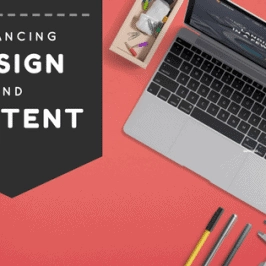Balancing Content and Design for your Website

Web Design vs. Content: Finding the Right Balance for Your NZ Website
For a long time in web design, there’s been a debate about what to prioritise. Does it need to be the content? After all, that’s what users actually read once they visit your site. Or should it be the design, so users don’t leave immediately because it doesn’t look appealing enough?
Frankly, you can’t really say one aspect completely trumps the other. Both are just as important in making a successful website. This is often a problem with poorly planned or ‘cheap’ website builds that don’t pay attention to these details and get the balance wrong. In fact, a text-heavy website with no design attention, or one with a great design but lacking substance – neither is truly effective.
Why Design Matters: Making a Strong First Impression
First, let’s start with why design is important. The very first thing users notice when visiting a website is how it looks. Visual appeal involves many factors, including font choices, spacing, layout, and button design. Every aspect needs careful consideration to ensure consistency and that the site doesn’t look unprofessional or ‘cheap’. Remember, first impressions often last online, and if you don’t make a good one quickly, you’ve lost half the battle.
Why Content is King: Delivering Value to Users
However, once the initial visual impression fades, it often comes down to the content. Can you sustain user interest with design alone? That’s simply not possible long-term. As Bill Gates famously stated back in 1996, “Content is King“. There needs to be substance – information, features, or entertainment – that shows the website is worth revisiting. It doesn’t matter as much if you’re using a pre-built or affordable website template if you have the right content to back it up. Ultimately, people visit websites for information or to complete a task. If you can fulfil that need effectively, growth often follows.
Tailoring the Balance: Purpose-Driven Design and Content
In the end, your website needs to project what it’s essentially about, influencing your online presence. For example, if it’s a photography website, you might focus more heavily on the visual design. Make a visual statement and ensure your photography is the focus. Here, things like colour palette and layout become critically important. Conversely, for a text-heavy blog, the content itself is paramount, though good readability and design still matter. A key difference with a professional approach is that the designer understands this balance and what’s needed for your specific goals, paying attention to technical aspects like page size, load time, and overall usability.
Getting the Balance Right with Professional Design
Figure out what you need early on, and communicate this clearly to your web designer – you’ll be well set for a better outcome. Contact us when you’re ready to discuss your specific project and how we can help you achieve the right balance between compelling design and valuable content.